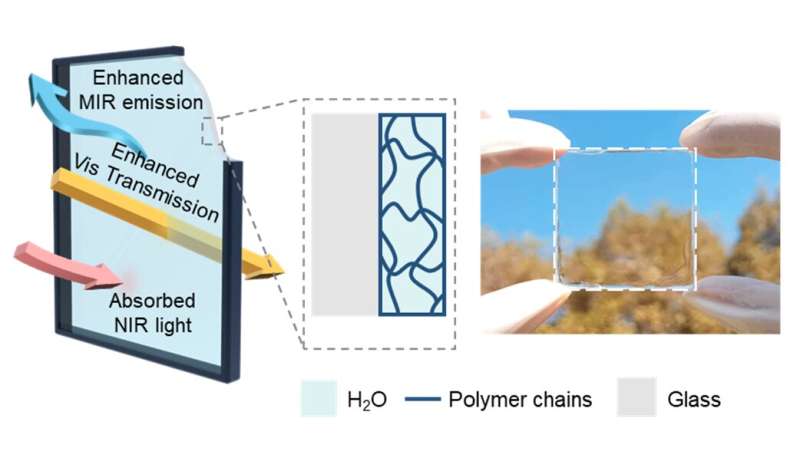Structure design and working principle of the hydrogel-glass. Credit: Jia Fu et al
Energy use in buildings contributes to over 40% of the world's total energy consumption, of which lighting and space cooling make up a significant proportion. Traditional glass windows have been used for centuries; however, they are not energy-efficient. In the summer, the near-infrared sunlight transmitted through windows produces undesired heating, and the high reflection of mid-infrared limits heat rejection from the building.
This "greenhouse effect" aggravates cooling energy consumption. How to manipulate the near- and mid-infrared light through the windows to reduce cooling consumption while maintaining the high visible transparence for lightning remains a very challenging problem for the design of glasses.
Researchers at Wuhan University in China, led by Prof. Kang Liu, propose a novel design of hydrogel-glass that consists of a layer of hydrogel and a layer of normal glass. Compared with traditional glass, the hydrogel-glass possesses a higher level of visible light transmission, stronger near-infrared light blocking, and higher mid-infrared thermal emittance.
With these properties, the researchers demonstrate the hydrogel-glass windows can enhance indoor illumination and reduce the indoor temperature. Simulations show that the novel window can reduce the energy use of building lighting and cooling ranging from 2.37 to 10.45 MJ·m−2·year−1 for different cities around the world. The work was published in Frontiers of Optoelectronics.
More information: Jia Fu et al, Broadband light management in hydrogel glass for energy efficient windows, Frontiers of Optoelectronics (2022). DOI: 10.1007/s12200-022-00033-4
Provided by Higher Education Press
























